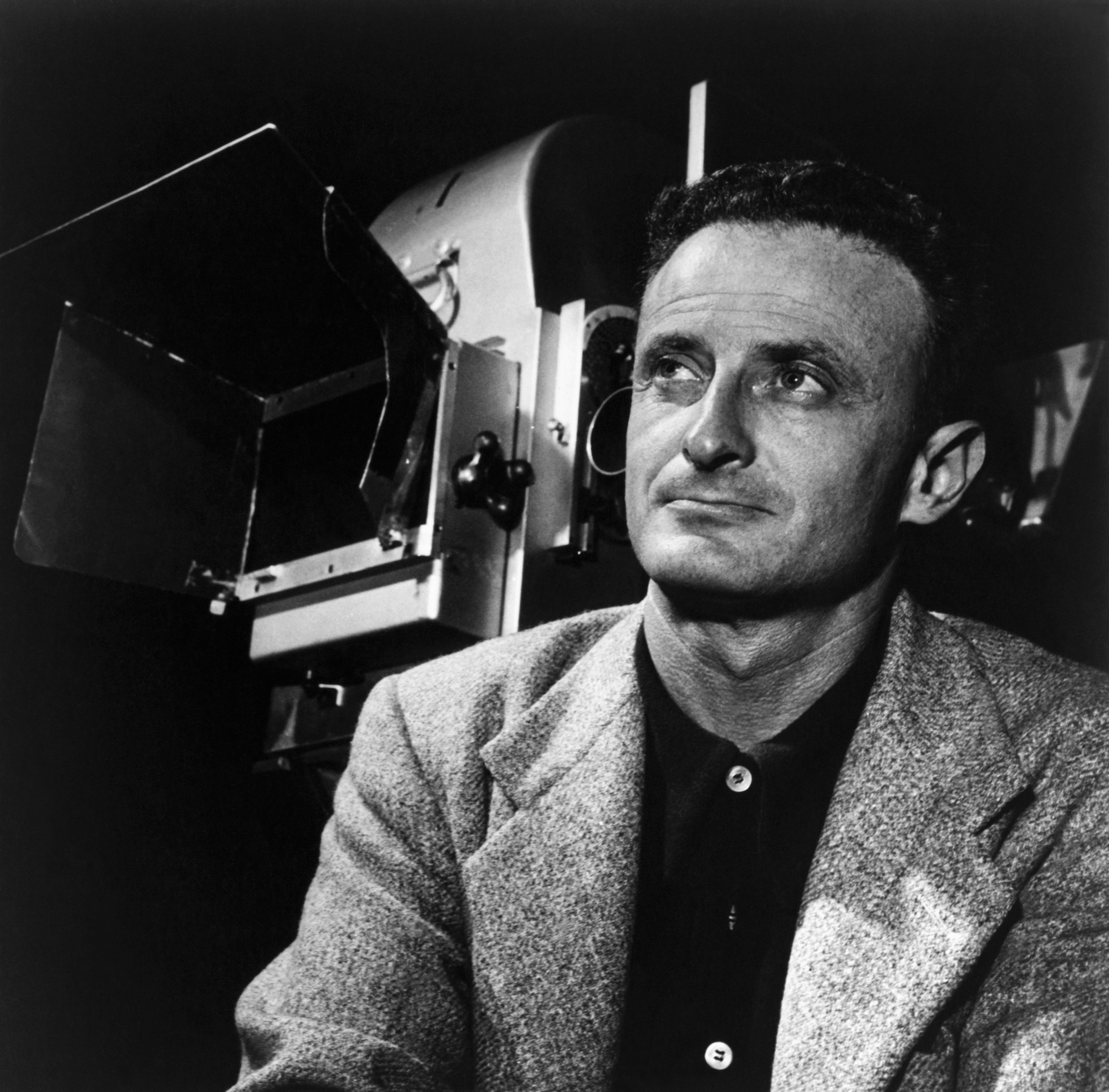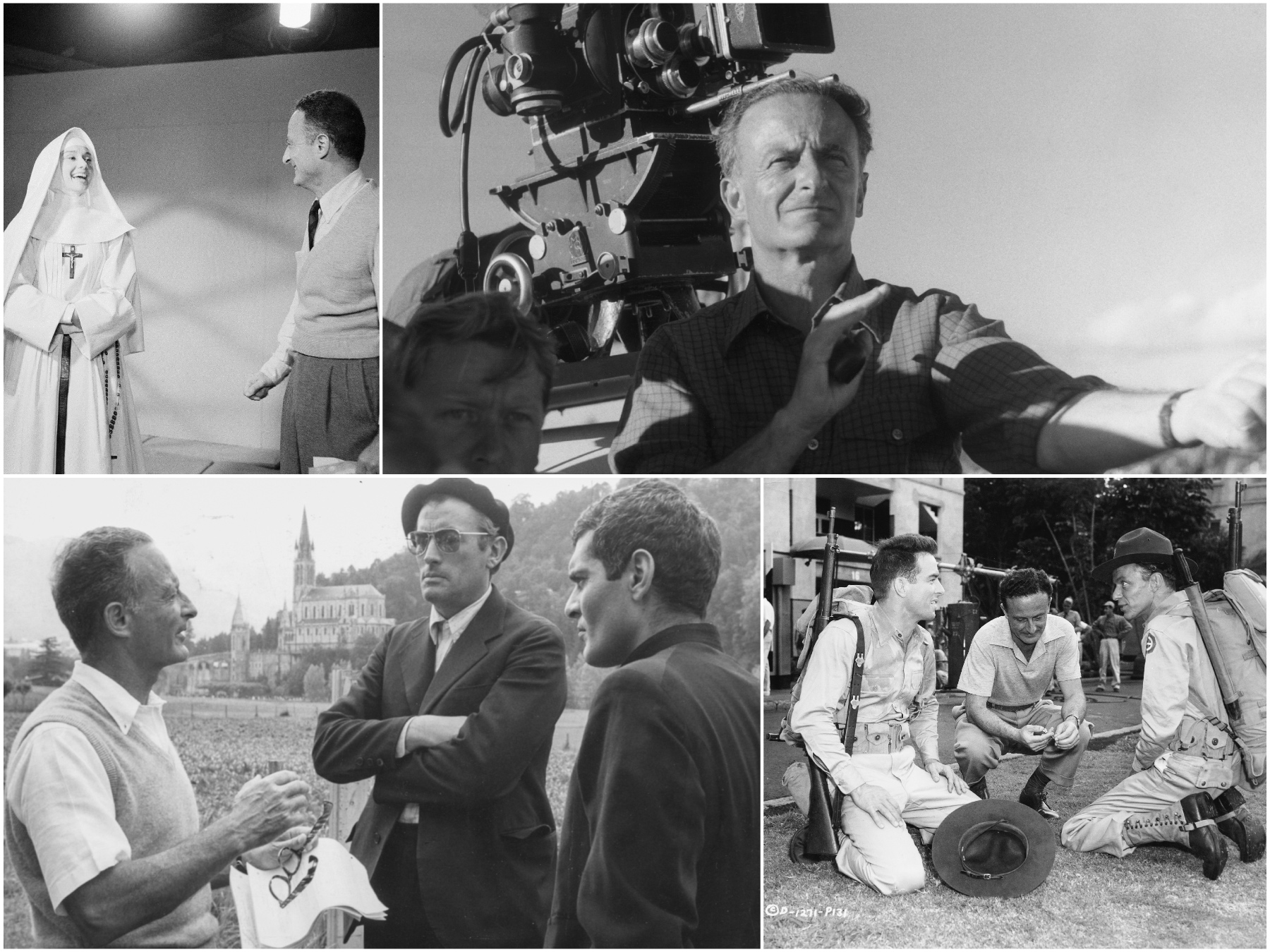
- Film
Filmmakers’ Autobiographies: Fred Zinnemann – The Glistening Film Machine
Film Bios is an occasional series reviewing autobiographies of notable filmmakers.
It was October 24th, 1929 and Fred Zinnemann had just disembarked in New York after a seven-day crossing from Cherbourg, France. The very day the stock market crashed. “In retrospect, this was perhaps not the best moment to arrive in America, the filmmaker recalls in his richly evocative autobiography A Life in the Movies, published in 1992. But the gates of adventure were opening.” That’s all the 22-year-old Austrian was thinking about, hoping to make his dream of working in the movies come true after his apprenticeship in Paris and Berlin. And now, the only way was to go west. To Hollywood. “A hazardous gamble to learn as much as possible about talking pictures, and returning home with a bit of expert knowledge.”
The beginnings were a bit chaotic, filled with uncertainty for the aspiring cameraman. One of his first jobs was as an extra in All Quiet on the Western Front directed by Lewis Milestones. After being fired, he became an assistant to stage and film director Berthold Viertel, a compatriot recently imported by Fox Studios. His home in Santa Monica Canyon was a welcome meeting place for the European colony. There a star-struck Zinnemann found himself in the presence of Eisenstein, F.W. Murnau, Jacques Feyder, Max Reinhard, Charlie Chaplin, Greta Garbo, a close friend of Viertel’s wife Salka. Another regular was Robert Flaherty, “the father of the documentary”, who had made Nanook and Moana. “I was still green and impressionable and very much in search of a hero, disenchantment with Hollywood and its castrated talents had begun to creep in. There was an aura about him of freedom from convention, of endless horizons…”
One day he asked to work for him. It would be a life-changing experience. His impact would leave an indelible mark and help shape his process as a filmmaker until the end. “Professionally he was my godfather. He did not know the meaning of compromise. His documentary approach was vivid in my memory when I prepared The Search, The Men, High Noon, The Nun’s Story, Julia, and many others…”
And indeed, during his almost 50-year long career, Zinnemann would eschew as often as possible the limits and constraints of the soundstages and studio backlots to take his camera all over the world for maximum authenticity, because “location is an actor, a dramatically active ingredient in itself.” Starting in 1934 with The Wave that was filmed entirely on location for seven months amongst the fishermen of Alvarado on the coast of Mexico. Combining to great effect highly stylized artistry with modernist realism. Then, for The Search, in 1947, he used the bombed-out wasteland around Munich and Nuremberg. Before going to Italy for Teresa, Arizona for Oklahoma! the Belgian Congo forThe Nun’s Story, the Australian outback for The Sundowners, the French Pyrenees for Behold a Pale Horse, Paris for The Day of the Jackal, the mountains of Switzerland for his last picture, Five Days One Summer.
All these movies, and others, of course, have their own chapter in the coffee table book, each richly illustrated. Each offering a trove of anecdotes and unknown facts. Providing another perspective on such classics as High Noon, probably his best-known achievement shot at the height of the McCarthy era in 1951. “I never thought of it in political terms, he still insists. To me, it was a story about a man who wouldn’t compromise.” He is proud to have made the film in 28 days, thrilled that Gary Cooper accepted the part, “as the local vultures (read Hollywood) were predicting his career was finished, as his last two pictures had not been successful.”
He briefly comments on what is possibly still today the most famous image he created. The crashing surf sensuously washing over Deborah Kerr and Burt Lancaster rolling and kissing on a Hawaiian beach in From Here to Eternity. “The scene, regarded as sensational and extremely provocative at the time, seems harmless by today’s standards. But the movie censors insisted on deleting four seconds of it. In later years, I found that even more had been snipped out by theater projectionists, as a souvenir no doubt!”
On working with his actors he applied a simple rule. “I like to explain to them what I want but not how to do it and fortunately I have a clear sense of their potential which allows me to make offbeat choices and to gamble in the casting. I have of course made a great number of wrong decisions.”

A life in the machine: with Audrey Hepburn on the set of The Nun’s Story, 1959; in 1960, on location in Australia shooting The SundownersFrom Here to Eternity, 1953; in Lourdes, France, rehearsing a scene of Behold a Pale Horse with Gregory Peck and Omar Sharif, 1963.
corbis historical/bettman archives/hulton archives/getty images
He reminisces fondly on some of them. Spencer Tracy: “He never gave the impression he was acting. He simply was there, always creating the feeling of truthfulness. But as a person, he often seemed troubled and not at peace with himself.” Montgomery Clift: “he was super-sensitive and therefore enormously vulnerable. It was as if he had no skin to protect him. He could be devious if necessary in trying to accomplish what he thought was right for his performance. It seemed wise to let a man of such enormous talent find his solutions to his own way.” Audrey Hepburn: “I have never seen anyone more disciplined, gracious or more dedicated to her work, incandescent and no ego, no asking for extra favor.” Marlon Brando: “He had real intensity. He was like a volcano. He wasn’t easy to work with. It was his first film and he was suspicious of Hollywood people and he kept his own counsel”. Vanessa Redgrave: “ I was sometimes so riveted by her performance that I forgot to say “Cut” at the end of a scene.” Others too left him in awe. Orson Welles, Anthony Quinn, Frank Sinatra, Jane Fonda, Sean Connery. “I found that unless you can strip that element of stardom away from the work, then there are problems. For me, it was easier to work with people who can forget they were stars.”
He wonders if the “sensational screen text of James Dean”, auditioning for Oklahoma! might be found one day. And feels sorry for Ivan Jandl, the young Czech actor from The Search who ended up winning a special Oscar and a Golden Globe for his performance, but was never allowed to come to America to pick them.
He proudly alludes to the numbers of Oscars some of his films won and but says nothing about the two Best Director ones he collected for From Here to Eternity and A Man for All Seasons. Still, after all those years, too modest to take all the credit.
He writes about the failed projects. How he had to withdraw from the 1955 adaptation of Ernest Hemingway’s The Old Man and the Sea. After a gigantic mechanical marlin built at the studio’s expense and transported from Burbank to Miami on two railroad flat cars, sank without a trace in the waters off Havana, Zinnemann gave up. In the end, he says “It made little sense to proceed with a robot pretending to be a fish in a studio tank pretending to be the Gulf Stream with an actor pretending to be a fisherman.”
Another blow was what happened in December 1969 when, after working three years on the adaptation of André Malraux’s Man’s Fate, M.G.M.’s new management simply canceled the whole production by a simple legal cable, a few days before filming was due to start with Liv Ullmann, David Niven, and Peter Finch.
He still wonders why some of his films did not meet their public at the times. Like A Hatful of Rain or Five Days One Summer. The latter, his swan song as a director, released in 1983, was murdered by the critics and a box-office flop. But Zinnemann, always the gentleman, doesn’t express any bitterness or rancor. Settled in London for many years where he would die in 1997, he doesn’t feel he turned his back on Hollywood. But he admits that it had changed so much, leaving feeling quite dispirited, even if, from the start, he never was fooled by the enduring hypocrisy of the movie business which he was able to navigate to his advantage. Always trying to avoid compromising amongst what his compatriot Josef von Sternberg called “the maze of the glistening film machine.’